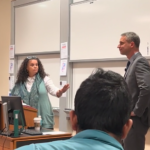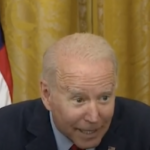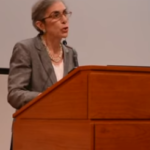Cultural Proficiency=Academic Deficiency
Omaha Public Schools’ purchase of books allegedly touting “white privilege” ideals last month-paid for with more than $131,000 federal stimulus dollars-caused quite a stir. The Platte Institute for Economic Research wondered, “Did OPS really purchase 8,000 copies of a book ostensibly dealing with white privilege and racist ideologies?” We purchased the book and read it to find out.
The central premise of the book seems to be that students different from the “norm” are treated badly by teachers and schools. The book assumes every child is not given a rigorous education and suggests a lack of understanding about cultural differences-including race, ethnicity, gender, sexual orientation and socioeconomic status-by teachers and school officials. While the book contains some culturally insensitive statements, its greatest fault is in insufficiently-substantiated evidence within the text.
The preface begins by claiming past education efforts “provided educational rigor” for some students and “sorted out the rest into a predetermined lower societal class” (ix). The book blames schools for “overtly” participating in “establishing and maintaining a tradition of societal elitism.” It blames schools for enforcing cultural barriers based on race, ethnicity, gender, sexual orientation, religion and physical disability. According to the authors, everyone in a school community needs to be on-board with becoming culturally proficient (ix). Perhaps this reasoning influenced OPS’ decision to purchase the book for all staff members, including its custodial staff.
In chapter one, the authors make up a fictional school district and talk about its challenges. The district is racially mixed, but with a larger population of European-American students than OPS. Readers are asked to consider theoretical questions, like the difference between the words “every” and “each” (10).
Chapter two explains four cultural proficiency tools that together create a cultural proficiency framework. The “Guiding Principles of Cultural Proficiency” give educators a set of indoctrinating ideologies about culture, such as the idea that “people are served in varying degrees by the dominant culture” (19). The text also lists three potential barriers people face when trying to become more culturally proficient, such as “a sense of privilege and entitlement” (20). A cultural proficiency continuum in this chapter illustrates “healthy” and “unhealthy” behaviors educators use in their classrooms (21). This continuum considers color and cultural blindness to be unhealthy behaviors. Instead, the authors say, educators and schools need to “see the difference that difference makes” (21). According to the cultural proficiency continuum, educators must agree with and develop five “essential elements” to be considered culturally competent. These elements include “institutionalizing” knowledge about cultural groups by “making learning about cultural groups…an integral part of the school’s professional development,” among others (28-29).
Chapter three examines the idea that beliefs guide actions. It presents a “ladder of inference” to explain how one can create assumptions about others based on one’s personal beliefs and the behaviors others commit (34-35). The authors ask the reader to consider what societal values, such as equality and achievement, he or she adheres to most and why. Then readers must respond to a list of statements about cultural beliefs. Assumptions like “the dominant culture marginalizes many people in this country” and “white privilege exists in America” were among the more offensive statements given in the book (52). Educators who agree with these ideas, among others, score higher on the “cultural proficiency beliefs inventory” and demonstrate a higher level of cultural proficiency (57).
In chapter four, the final instructional chapter of the book, the authors delve into issues of morality in education, correctly noting it is important for all students to learn. While they never give evidence cultural proficiency improves student achievement, the authors claim “the gap between high and low performers becomes less as the bar for all [students] is raised” (62). The authors credit Fullan (2003) with this information. However, neither text gives clear evidence that cultural proficiency among teachers improves student achievement. The pages of Fullan’s text cited by the authors of The Cultural Proficiency Journey, do not note any particular research proving that cultural proficiency improves student achievement. OPS should check their sources before embarking on a “journey” that may leave them with test scores no better than the status quo. The chapter concludes with an emotionally-charged story about a 35-year-old grandson activist of a Ku Klux Klansman and dual consideration of the logical problem of two seemingly “right” decisions in given situations (67-69, 71-73).
Chapters five through seven function as an activity booklet, as they encourage educators to apply cultural ideas from earlier chapters to fictional scenarios. The authors present these scenarios through three potential “barriers to cultural proficiency” also noted in chapter two: “resistance to change,” “systems of oppression” and “a sense of privilege and entitlement” (20).
In the final section of the book, the authors heuristically reflect on educators’ duties and roles. “Educators must change in order to provide high academic education for each child,” the authors say, claiming “a fundamental shift in moral perspective” is necessary to achieve school change (113).
While people may debate the merits of the book’s conclusions, the question remains: was necessary for OPS to spend over $130,000 in taxpayer funds to buy books with findings that are at best unsubstantiated and at worst promote ideas that could be classified as racist? If an individual wishes to purchase the book, that is his or her personal choice, but in the view of the Platte Institute, taxpayers should not be forced to pay for controversial and potentially offensive books. Rather than an unproductive focus on what makes kids different, educators should focus on how to maximize every child’s full potential.
To can purchase or review “The Cultural Proficiency Journey: Moving Beyond Ethical Barriers Toward Profound School Change” here at Amazon.
Christa Hillmer is a policy analyst with the Platte Institute, which originally distributed this column.




